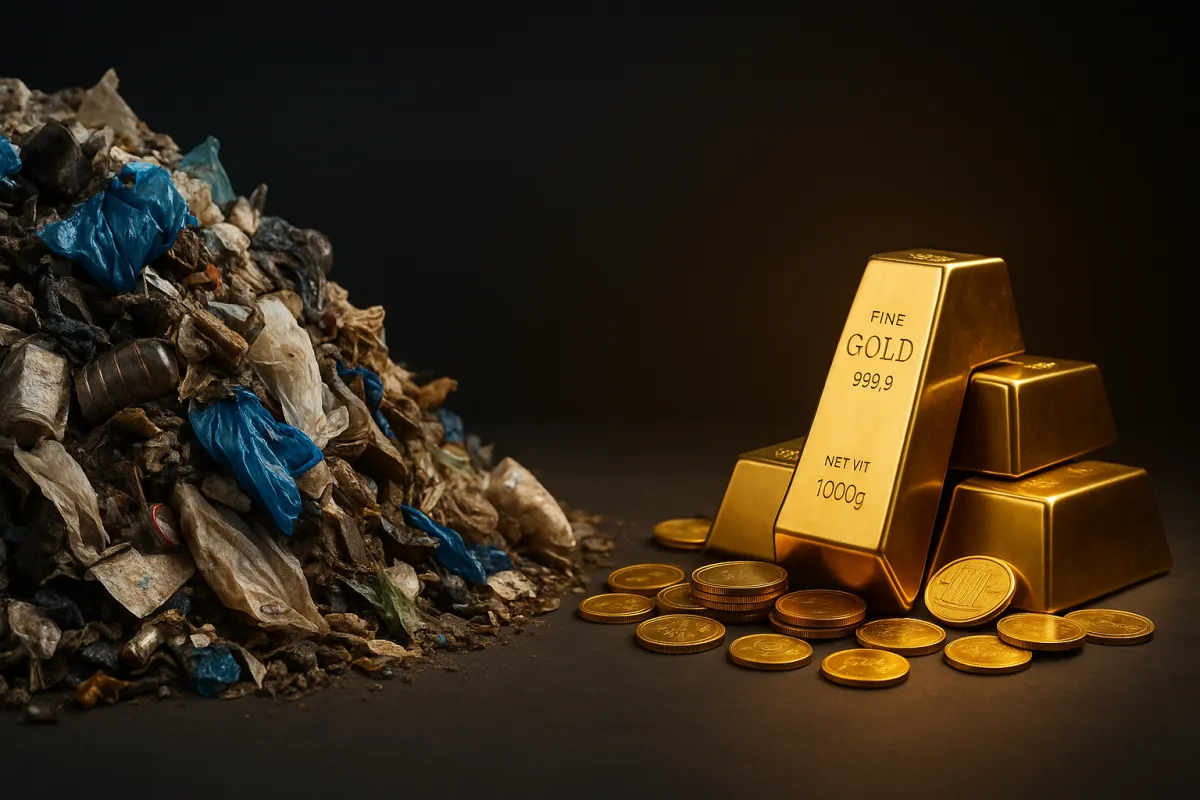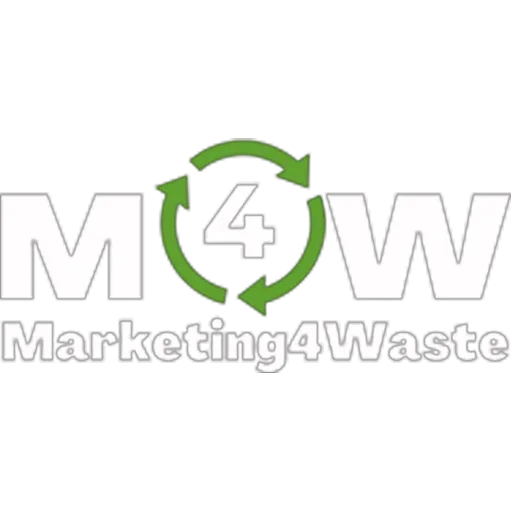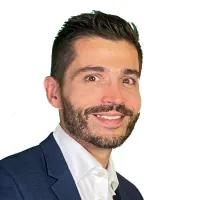Increase the Revenues of Your Waste Company With the Tips Shared in Our Blog Articles

How Smart Waste Managers Turn Trash Into Cash
Waste. You haul it every day. You pay to dump it. You fight for cash flow while municipalities stretch your payment terms 45…60…sometimes 90 days. Meanwhile, the smartest players are pulling cash out of the same trash within a week.
So the real question is this:
Are you going to keep bleeding money into landfills—or will you claim the secondary raw materials your trucks already collect?
Today, I want to show you the proven steps that American and international waste operators are using right now to unlock new profit streams. And I’m not talking about buzzwords or greenwashing. I’m talking about hard evidence, proven results, and cash in your account.
Step 1: Price the Trash, Not the Recycling (PAYT)
Let’s start with the move that changes the game overnight.
Pay-As-You-Throw (PAYT).
When households and businesses pay based on how much trash they set out—per bag, per cart, or by weight—something powerful happens:
Trash volume drops by 14–27% on average.
Some towns report up to 49% less garbage collected.
Recycling and organics spike—because they cost less (or nothing).
This isn’t theory. This is data pulled from EPA-backed studies and real towns across New England and the Midwest.
For you, the hauler or waste company owner, it means:
Lower landfill fees.
Cleaner recycling streams (because people separate better).
New leverage in contracts—because you’re the one bringing cost-cutting innovation to the municipality.
The Alchemist’s vision: PAYT is the crucible where trash starts transforming into revenue. By putting a price on disposal and making recovery the cheaper option, you unlock cleaner, higher-value secondary raw materials without a single new machine on your MRF floor.
Step 2: Lock the Value of Containers with Deposit Return Systems (DRS)
If you want guaranteed material purity, follow the money:
Countries with Deposit Return Systems (DRS) for bottles and cans routinely hit ~90% return rates. Germany? They’re at 98%. That’s as close to total recovery as you’ll ever see in the waste game.
Why does this matter?
Aluminum cans and PET bottles coming out of DRS are near-food-grade purity.
That means higher resale prices, fewer contamination penalties, and a direct path to manufacturers who are desperate for tariff-proof domestic inputs.
The Alchemist’s vision: DRS is the philosopher’s stone for plastics and metals. It turns what most treat as nuisance curbside materials into a premium commodity that mills and bottlers fight to buy. If your state is setting up a DRS, don’t complain. Position yourself as the logistics partner, own the bale, and watch your margins expand.
Step 3: Add the AI Edge to Sorting
Your MRF or transfer station is leaking money. Why? Because legacy sortation is expensive, dirty, and misses too much value.
Now look at what’s happening in AI-powered plants:
Robots and vision systems identify plastics with >90% accuracy.
They run 24/7 without breaks.
They slash labor costs (sorting is often 30–50% of operating costs).
Bale quality rises, which means higher offtake prices and fewer rejected loads.
This isn’t Silicon Valley hype. These are operating results from facilities across the U.S. and Europe that installed AI optics and robotic arms in just the last three years.
The Alchemist’s vision: Think of AI like the magnifying glass of the alchemist. It doesn’t change the material—it reveals its true value. The more accurately you can identify and separate SRMs, the more money you pull from each ton.
Step 4: Attack the Biggest Pile—C&D Waste
Here’s the part nobody wants to admit: Construction and Demolition debris dwarfs municipal trash.
In 2018, the U.S. generated 600 million tons of C&D waste—more than 2x the total MSW.
About 455 million tons were reused as aggregate or metals.
But 145 million tons still got buried.
That buried fraction is pure opportunity. Metals, wood, gypsum, roofing…all sitting in landfills.
For you, the operator, the play is simple:
Stand up a pad sorting line for mixed C&D.
Segregate concrete, metals, and clean wood.
Sell the aggregates back into local construction markets.
The Alchemist’s vision: C&D is the hidden gold mine. While everyone chases curbside recycling, you’re quietly stacking tons of high-demand commodities from demo jobs. The real alchemy here is scale—pull just 10% of that 145 million tons into resale, and you’re holding the keys to a multi-billion-dollar supply.
Step 5: Treat E-Waste Like the New Copper Vein
Globally, only 17.4% of e-waste is properly recycled. The rest? Lost copper, aluminum, gold, palladium.
But the margins in e-waste are insane:
Circuit boards and CPUs carry some of the highest-value SRMs per ton of any waste stream.
Wiring harnesses and power supplies are copper mines in disguise.
The fastest-growing haulers in the U.S. aren’t ignoring this. They’re setting up e-waste collection days, partnering with IT refurbishers, and locking in smelter contracts.
The Alchemist’s vision: E-waste is the modern version of ancient alchemists’ obsession with gold. Except this time, the gold is literally there—on the boards, in the chips, in the wiring. All you have to do is claim it before someone else does.
Step 6: Build Industrial Symbiosis
In Denmark, the Kalundborg industrial park became famous because one plant’s waste became another plant’s feedstock. Gypsum, steam, water, sludges—all exchanged, all monetized.
That’s not charity—it’s material arbitrage.
For U.S. operators, the same playbook applies in industrial clusters:
One plant’s plastic scrap is another’s feedstock.
One’s sludge is another’s raw input.
Waste heat powers a neighbor’s process.
The Alchemist’s vision: This is the true circle—not a green slogan, but a network of cash flows where nothing is wasted and everything has a buyer. You, as the waste company owner, become the broker of these exchanges.
Step 7: Monetize the Tariff Wall
U.S.–China tariffs changed the rules. Suddenly, manufacturers inside the U.S. pay premiums for reliable domestic feedstock.
That means your aluminum, copper, and steel bales—if they meet spec—are worth more than ever.
Here’s the kicker: SRMs are tariff-proof. They’re not imported, they’re not exposed to border games, and they don’t get hit by duties.
The Alchemist’s vision: The tariff wall is your furnace. It concentrates value on what’s local. If you can guarantee purity and continuity of supply, you can lock in contracts with manufacturers at a premium price point.
The Bottom Line: Stop Hauling Trash. Start Selling Materials.
Every one of these steps is proven. The data is there. The cash is waiting.
PAYT cuts trash and feeds you cleaner recyclables.
DRS delivers high-purity PET and aluminum.
AI lifts MRF performance to new levels.
C&D is the untapped mountain of material.
E-waste is a copper and gold mine.
Industrial symbiosis makes you the broker, not the dumper.
Tariffs tilt the market in your favor—if you have the SRMs ready.
As The Waste Management Alchemist, I’m here to remind you:
Trash is not trash. It’s unrefined treasure.
The only question is—will you keep burying it, or will you claim your share?
Your Next Move
I’ll help you design a 90-day plan to:
Map your waste flows,
Identify the cash leaks,
Show you where your first $100,000–$500,000 in SRM margin is hiding.
👉 Book your free consultation today. Spots are limited. First come, first served.
Because in this business, fortune doesn’t favor the hauler—it favors the Alchemist who knows how to turn waste into wealth.
To Your Success
Sam Barrili
The Waste Management Alchemist


© 2025 Marketing4waste - All Rights Reserved,
Marketing4Waste is a brand of MiM MarketingInterimManagers LLC
+1 801 804 5730

